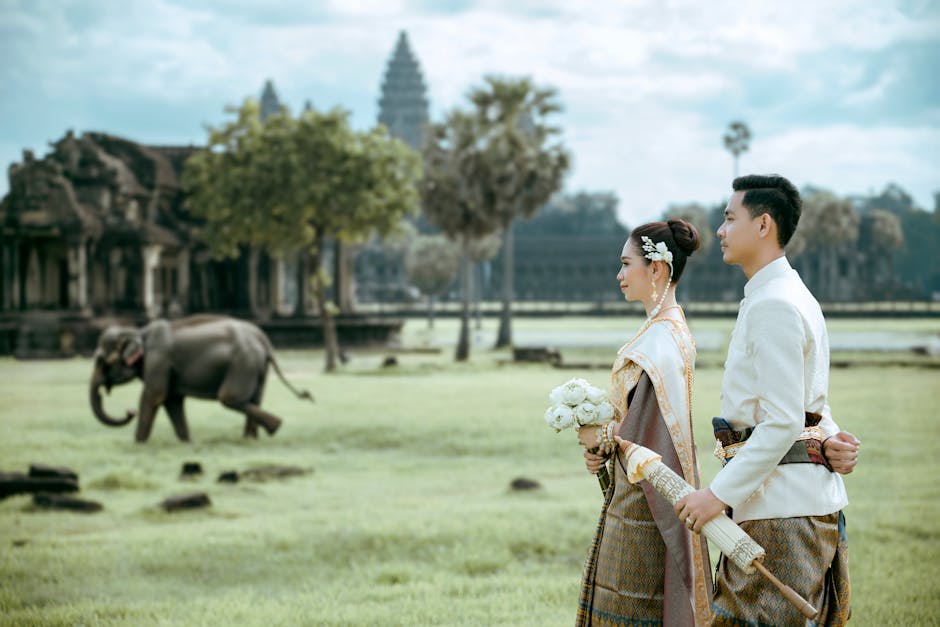Manga & Anime Culture in Japan: Exploring Akihabara, Ghibli, and More

Manga & Anime Culture in Japan: Exploring Akihabara, Ghibli, and More
Hey there, fellow anime and manga enthusiasts! Ever since I dipped my toes into the vibrant world of Japanese animation and comics, I've been absolutely hooked. The artistry, the storytelling, the sheer creativity – it's all just mind-blowing. And guess what? I finally got to experience it all firsthand during my trip to Japan! From the electric streets of Akihabara to the whimsical world of Ghibli, it was an unforgettable adventure. Let me share my experiences and insights with you!
Diving Headfirst into Akihabara: Electric Town!

Okay, so picture this: you step out of the train station, and BOOM! You're immediately bombarded with flashing neon lights, ear-splitting J-Pop, and the vibrant displays of countless electronics and anime shops. Welcome to Akihabara, my friends, otherwise known as Electric Town! It's the heart and soul of anime, manga, and video game culture in Tokyo, and honestly, it felt like stepping into another dimension.
I'm not even exaggerating when I say it was overwhelming, in the best possible way. Every corner you turn offers something new and exciting, from towering manga stores overflowing with volumes to arcades packed with the latest games.
Here are a few of my Akihabara highlights:
- Animate Akihabara: This multi-story store is a must-visit. It's practically a pilgrimage site for anime and manga fans. I spent hours browsing through figures, keychains, posters, and everything in between. They even have themed cafes!
- Radio Kaikan: Don't be fooled by the unassuming exterior; Radio Kaikan is a treasure trove of collectibles. You can find rare figurines, vintage toys, and all sorts of unique merchandise here. It's a great place to hunt for those hard-to-find items.
- Arcades: Akihabara is arcade heaven! I lost track of time (and my money, haha!) playing claw machines, rhythm games, and fighting games. The energy in these places is infectious.
Honestly, just wandering around Akihabara and soaking in the atmosphere is an experience in itself. Even if you're not a hardcore collector, the sheer spectacle of it all is captivating. Just be prepared for crowds, especially on weekends!
Manga Mania: Exploring the World of Japanese Comics

Before diving into anime, my journey began with manga. I was instantly drawn to the diverse genres, the dynamic artwork, and the complex characters. And being in Japan, the birthplace of manga, took my appreciation to a whole new level.
I learned so much about the history and cultural significance of manga. It's not just entertainment; it's a powerful form of storytelling that reflects Japanese society, values, and traditions. From historical epics to slice-of-life dramas, manga explores a vast range of themes and caters to all ages and interests.
Here's what I discovered about the different manga genres:
- Shonen: Targeted towards young boys, shonen manga often features action-packed stories, strong male protagonists, and themes of friendship and perseverance. Think Dragon Ball, One Piece, and Naruto.
- Shojo: Aimed at young girls, shojo manga typically focuses on romance, relationships, and emotional development. Popular titles include Sailor Moon, Fruits Basket, and Cardcaptor Sakura.
- Seinen: Marketed to adult men, seinen manga often explores more mature themes, complex characters, and darker narratives. Examples include Berserk, Vagabond, and Vinland Saga.
- Josei: Intended for adult women, josei manga typically deals with realistic relationships, career aspirations, and the challenges of adult life. Titles like Honey and Clover and Princess Jellyfish fall into this category.
One of my favorite things about reading manga in Japan was discovering independent bookstores and manga cafes. Imagine curling up in a cozy corner, surrounded by shelves of manga, with a steaming cup of coffee in hand. Pure bliss!
The Magical World of Studio Ghibli: Animation at its Finest

Okay, now let's talk about Studio Ghibli! For me, Ghibli films are more than just animation; they're works of art that resonate with audiences of all ages. The breathtaking visuals, the enchanting music, and the profound storytelling create an unforgettable experience. I finally got to visit the Ghibli Museum in Mitaka, and it was absolutely magical!
Getting tickets to the Ghibli Museum is a bit of a challenge (you need to book them well in advance!), but it's totally worth the effort. The museum itself is designed to feel like a Ghibli film, with whimsical architecture, hidden pathways, and interactive exhibits.
Some of my favorite parts of the museum included:
- The Straw Hat Cafe: After exploring the museum, I treated myself to a delicious meal at the Straw Hat Cafe. They serve Ghibli-themed dishes and drinks, and the atmosphere is just delightful.
- The Theater: The museum's theater screens short Ghibli films that are not available anywhere else. It's a unique opportunity to see some hidden gems from the studio.
- The Rooftop Garden: The rooftop garden features a life-size statue of the robot soldier from Castle in the Sky. It's a great spot to take photos and enjoy the beautiful surroundings.
Beyond the museum, I also visited several locations that inspired Ghibli films. The forests of Yakushima, for example, are said to have inspired the landscapes of Princess Mononoke. Walking through those ancient forests felt like stepping into the film itself.
Ghibli films have a unique way of capturing the beauty and wonder of the natural world. They also explore important themes like environmentalism, pacifism, and the power of human connection. They're films that stay with you long after the credits roll.
Cosplay Culture: Transforming into Your Favorite Characters

No discussion about Japanese anime and manga culture would be complete without mentioning cosplay! Cosplay, short for "costume play," is the art of dressing up as your favorite characters from anime, manga, video games, and other forms of media. And in Japan, cosplay is a serious business!
I was amazed by the dedication and craftsmanship of the cosplayers I saw. They put so much time and effort into creating their costumes, from meticulously crafting the outfits to perfecting the character's mannerisms.
I saw cosplayers at events like Comiket (Comic Market), which is the world's largest fan convention. The sheer scale of Comiket is mind-boggling. Thousands of cosplayers gather to showcase their creations, and fans flock to take photos and admire their work.
Here's what I found impressive about Cosplay:
- The Attention to Detail: Cosplayers pay meticulous attention to every detail of their costumes, from the fabric and colors to the accessories and makeup.
- The Performance: Cosplay is not just about wearing a costume; it's about embodying the character. Cosplayers often strike poses, recite lines, and interact with other cosplayers in character.
- The Community: Cosplay is a social activity. Cosplayers form communities and support each other's work. They share tips and techniques, and they organize events and gatherings.
Even if you're not a cosplayer yourself, attending a cosplay event is a fantastic experience. It's a celebration of creativity, fandom, and self-expression. It's also a great way to meet other people who share your interests.
Anime Pilgrimages: Visiting Real-World Locations from Your Favorite Shows

One of the coolest things I learned about during my trip is the concept of "anime pilgrimages." This involves visiting real-world locations that have been featured in popular anime series. It's a way for fans to connect with their favorite shows on a deeper level and experience the world of anime in a tangible way.
For example, the town of Washimiya in Saitama Prefecture has become a popular destination for fans of the anime series Lucky Star. The town's Shinto shrine is featured prominently in the series, and fans flock there to pay their respects and take photos.
Similarly, the city of Takayama in Gifu Prefecture is known for its traditional architecture and scenic landscapes, which have been featured in the anime film Your Name. Fans visit Takayama to recreate scenes from the film and soak in the atmosphere of the town.
While I didn't get a chance to go on a full-fledged anime pilgrimage during my trip, I did visit a few locations that were used as inspiration for certain scenes in Ghibli films. It was fascinating to see how these real-world locations were transformed and incorporated into the animated worlds.
Beyond the Surface: The Impact of Anime & Manga on Japanese Culture

Anime and manga are deeply ingrained in Japanese culture. They're not just niche hobbies; they're a significant part of the national identity. From the characters that adorn public transportation to the anime-themed products that fill store shelves, anime and manga are everywhere.
I was struck by the way that anime and manga are used to promote tourism, educate the public, and even address social issues. Local governments often collaborate with anime studios to create promotional campaigns that attract visitors to their regions. Anime and manga are also used to teach children about history, science, and other subjects.
The popularity of anime and manga has also had a significant impact on the Japanese economy. The anime and manga industries generate billions of dollars in revenue each year, and they employ thousands of people. These industries also contribute to the growth of related sectors, such as tourism, merchandise, and video games.
It's clear that anime and manga are not just forms of entertainment; they're powerful cultural forces that shape Japanese society and influence the world. The creative spirit and dedication to storytelling I witnessed were inspiring.
Final Thoughts: A Lasting Impression

My journey through the world of manga and anime in Japan was an incredible experience. From the electric streets of Akihabara to the whimsical world of Ghibli, I was constantly amazed by the creativity, artistry, and passion that permeate these art forms. It was much more than just a trip, it was a deep dive into a culture that I've admired for years.
If you're a fan of anime and manga, I highly recommend visiting Japan. It's a chance to experience the culture firsthand, meet fellow fans, and discover new and exciting aspects of this amazing world. I guarantee it will be an adventure you'll never forget!
So, what are you waiting for? Start planning your trip to Japan and prepare to be amazed by the magic of manga and anime!
Post a Comment